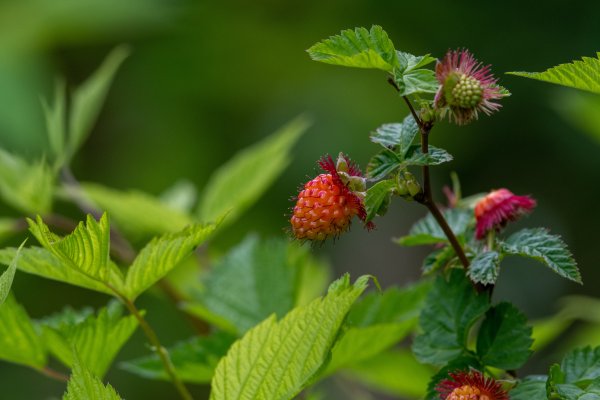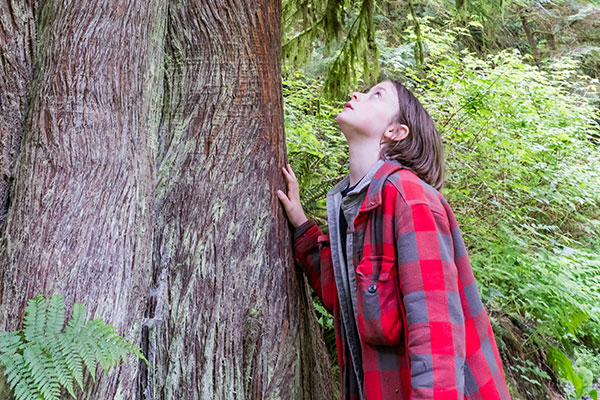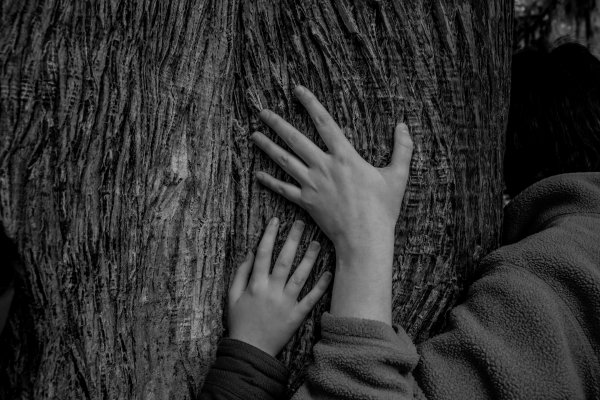Somewhere along the mossy banks of the Capilano River in North Vancouver on the unceded territories of the xʷməθkʷəy̓əm (Musqueam), Sḵwx̱wú7mesh (Squamish), and Səl̓ílwətaʔ/Selilwitulh (Tsleil-Waututh) Nations, under a canopy of hemlock, cedar, and vine maple, a revolution is happening—quietly, seriously, and deeply rooted in respect.
Love the Land: Adventures in Land-Based Learning and Ethnoecology is no ordinary nature walk. It is a walking tour led by Talaysay Tours, where Indigenous knowledge meets non-Indigenous curiosity head-on. Love the Land is a philosophy and way of life that emphasizes a profound, reciprocal relationship with the Earth.
Reciprocity? It’s so easy! Take only what you need. Give thanks. Give back. We are intertwined with everything in the natural world. The health of the lands, waters, skies, plants, animals, and all is the health of the people. Accept responsibility for the care of the places you love, work with others to achieve it, and continually learn how to do it better. Love the land and it will love you back.

Responsibility, Reciprocity & Radical Respect
On Love the Land tours, your guides don’t just talk trees—they speak to responsibility, reciprocity, and radical respect.
This tour is more than just seeing nature or learning about British Columbia— it's about learning to see through an Indigenous lens. It’s about remembering what the land has always known and reclaiming the things colonialism tried to erase. Mother Earth’s need for care has increased beyond the capacity of the traditional First Nations stewards. Without joining in the care, talking about how they’ve cared for the land since time immemorial is no honour, it’s just passing the buck.
We must all commit to learning from the methods that create balance and address the collective issues that have tipped this balance. Inspiring non-Indigenous landkeepers accelerates the pace of knowledge transfer to match the speed of environmental degradation.
Join, Connect, Return
Giving solo responsibility to traditional stewards for a problem that we all created isn’t respectful. It is not an honour to expect those who lived sustainably to accept responsibility for others' lack of knowledge, taking without giving back, and unsustainable practices and habits.
What we’re looking for here is for you to join in, to connect, to return some of the love you have for nature to nature. Love the Land offers an Indigenous lens —a way of seeing that you can carry with you wherever you go — and shares ways Indigenous and settler land lovers can work together to maintain sustainable land stewardship practices.
Viewing Nature Through an Indigenous Lens
Talaysay is looking to give non-Indigenous learners, land lovers, and allies the tools to do so: an Indigenous lens through which to view the land, skies, waters, and all our relations. A lens that sees through time, returning you to ancestral practice and cautioning you against the harsh inevitabilities of taking more than you give.
"We’re the only coastal temperate rainforest in the country, so that really bumps up the biodiversity," says Ruby Banwait, a self-proclaimed fish-nerd and passionate intercultural knowledge bridger with Talaysay Tours. "So many different plants, so many different animals that call this place home." Towering trees drip with moisture. Ferns unfurl beneath a cool, green understory. The air is rich with the scent of cedar and soil.
Ruby, who has a background in marine biology and education, carries the stories and stewardship protocols passed down by the Campo and Lewis families of the Sechelt and Squamish Nations. For her, guiding is a responsibility and an honour she doesn’t take lightly. With a touch of wit and a deep reverence for the forest, she walks you through ancestral knowledge with climate resilience built into its roots.
Plants: Food, Medicine, Technology
Take the salmonberry, or Yetwánaý in Skwx̧wú7mesh sníchim. "Indigenous Peoples are very particular about how they name things," Ruby explains. "They’re going to give you more information. The way that Indigenous People name things is very purposeful. When you have an oral history and an oral language, it’s really important that you’re not just naming something after yourself. That would have been seen as quite egotistical and not very useful."
Yetwánaý means “wet berry,” a nod to its juicy freshness after a long winter of dried foods. It’s the first fresh snack of spring. "The greatest way to get to know a berry is to eat it," Ruby says. "They’re very high in antioxidants, very high in Vitamin C. Coast Salish Peoples and Indigenous Peoples in general oftentimes interchange the words food and medicine, which I think is really cool."
Also appearing in early spring, with an acute punk that gives it its English name, is the skunk cabbage. It is plentiful and happy to grow anywhere water has been – skunk cabbage likes having its feet wet. It is abundant and would be ideal if this waxy, broad-leafed plant were edible. And technically, it is, with its tubers containing starches and carbohydrates.
Not Tasty, But Useful
"Skunk cabbage is a prehistoric plant. It’s one of the older plants we have in our forested areas," Ruby tells us. While black bears dig up their roots for a seasonal treat, humans not so much. "It’s considered a starvation food because it’s going to take so much processing to make it edible, and then it’s still not going to taste good."
So why does it matter? Because skunk cabbage isn’t just food. It’s technology. "The leaves are really important for food processing. That waxy coating helps to preserve food," Ruby shares. "When you’re out harvesting, you’d have your cedar basket that probably took weeks to make. You wouldn’t just want to put it in your basket. You’d want to line it first with skunk cabbage leaves to keep your cedar basket safe and your fish fresh."
Salmon in the Trees, Hemlock on the Shores
Although mostly second-growth, this forest still functions as a climate hero. "Old-growth forests are one of the most climate-resilient things we have. They sequester so much carbon," Ruby says. The dominant tree here? Western hemlock. It is so dominant that biologists have dubbed this region the Western Hemlock Biogeoclimatic Zone. But hemlock's role goes way beyond scenery.
"One of the reasons our forest is so lush is the influx of nutrients coming in from the ocean. The salmon literally feeds our forest. You can match the years of really great growth to the years of really high fish returns. You can actually find genetic evidence of the salmon in the trees. There’s a really close interaction," Ruby tells us.
And then there's the herring story. Indigenous knowledge doesn’t just take, it gives. "Every season, when the herring would come to spawn, they would do something to ensure they would return in greater numbers. They would take the hemlock boughs, just a few of the branches, and lay them along the shore to increase the area for the fish to lay their eggs on," Ruby recounts. "It was so environmentally friendly. A beautiful and simple act to ensure the herring population would come back year after year, nice and strong, even though they were being fished."
Think Like a Steward
The Love the Land tour doesn’t shy away from the hard truths. It demands better from all of us by sowing seeds of love and respect for the forest's beauty and offerings. Especially those of us who call ourselves nature lovers, hikers, and outdoor enthusiasts.
Step one? Follow the rules. There are signs posted everywhere to keep dogs on leashes. And yet, even in this beautiful place that seems almost out of time, poop bags hangs from trees and dogs bound through restoration zones.
Indigenous Knowledge teaches you to reorient your entire framework of interacting with the environment. It gives you the tools to think like a steward, not a consumer. "Finally, these traditions are coming back. They have not been lost. They have not been completely forgotten," Ruby says.
So go ahead. Fall in love with the land. Let the trees teach you something. Let the berries medicine you. Let Indigenous Knowledge guide you.
Love the land. Just don’t love it to death.
For more information on Talaysay Tours and how you can join a walk like this, visit talaysay.com.
Love the Land: Adventures in Land-based Learning and Ethnoecology is a walking tour in the salnachiya (forest) of xwesam-stelkaya (Roberts Creek), the shared homeland of the Shishalh and Sḵwx̱wú7mesh Peoples. The team behind the Don’t Love it to Death campaign picked up the Sustainability Excellence Award at the 2025 BC Tourism Industry Awards, while Talaysay Campo of Talaysay tours was awarded Woman of the Year in recognition of the achievements, professional expertise, resilience and leadership of outstanding women who play a vital role in the tourism industry in BC.
Essential Resources
General
- BC AdventureSmart
- BC Parks - Homepage
- CWSAA - Alpine Responsibility Code
- BC Parks - Responsible Recreation
- Hello BC - How to Travel Safely & Responsibly
- Indigenous Tourism BC - How to Travel Responsibly
- Leave No Trace
- Outdoor Recreation Council of BC - Recreate Responsibly
- Recycle BC - Pack Lean Leave Clean
- RecycleBC - Pack Lean Leave Clean - Toolkit
- Wilderness Tourism BC - ExploreWildBC Pledge
- BC Parks - KBYG Toilet Edition
- BCSARA - Outdoor Education
- Invasive Species Council of BC - Play Your Part
- Tourism Squamish - Responsible Recreation
- Tourism Whistler - Responsible Travel
- Vancouver North Shore - Know Before You Go
- Fire & Ice Aspiring Geopark
- Átl'ka7tsem/Howe Sound Biosphere
- Adventure Hub - BC Search & Rescue Association
- AdventureSmart Trip Planning App
- BC Wildfire Service App
Camping
- Camper's Code
- WildSafeBC - Bare Campsite Program
- Outdoor Recreation Council of BC - Recreate Responsibly
- BC Parks - Stay Safe in Bear Country
- BC Parks - Campfire Bans & Safety
- BC Parks - Backcountry Visitor Guide
- BC Gov - Know the Rules for Rec Sites & Trails
- BCSARA - Outdoor Education
- Invasive Species Council of BC - Campers
- AdventureSmart Trip Planning App
Motorsports and Offroading
Fishing
Hiking
- BC AdventureSmart
- CWSAA - Alpine Responsibility Code
- Outdoor Recreation Council of BC - Recreate Responsibly
- BC Parks - Backcountry Visitor Guide
- BC Gov - Know the Rules for Rec Sites & Trails
- BCSARA - Outdoor Education
- Invasive Species Council of BC - Play Clean for Hikers
- AdventureSmart Trip Planning App
Mountain Biking
- Mountain Bike BC - Ride Respectfully
- Outdoor Recreation Council of BC - Recreate Responsibly
- BC Parks - Backcountry Visitor Guide
- BC Gov - Know the Rules for Rec Sites & Trails
- BCSARA - Outdoor Education
- Invasive Species Council of BC - Mountain Bikers
- Pemberton Off-Road Cycling Association
- Squamish Off-Road Cycling Association
- Whistler Off-Road Cycling Association
- North Shore Mountain Bike Association
- AdventureSmart Trip Planning App
Pets
Wildlife
Related Impacts

1 Garbage And Human Waste
The improper disposal of human waste and garbage is harmful to humans, the environment, and wildlife.
- Kilograms of trash removed by Divers for Cleaner Lakes and Oceans since 2013
- 29,188
- Face masks collected by Vancouver plogger David Papineau
- 40,000

2 Human-Wildlife Conflict
People and pets getting too close to wildlife can lead to conflict, injury, and death.
- BC Parks reservations impacted by bear closures in 2024, up from 106 in 2023
- 128
- Number of black bears euthanized in BC in 2024, down from 603 in 2023
- 303

4 Lack of Respect - People & Environment
From trampling on trails to human-caused wildfires, disrespectful behaviour is creating conflict between user groups and damage to the environment and communities.
- Percentage of human-caused wildfires in BC, down from 42% in 2023.
- 30%

5 Trespassing & Disrespectful Use
Disrespect for sensitive ecosystems, Indigenous land, cultural sites, and private property, is hurting communities, wildlife and the environment

6 Overcrowding, Overuse & Traffic
Increased visitation is causing traffic woes, parking issues, overcrowding, and overuse in recreational areas and urban environments.



